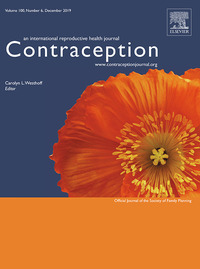Published in Contraception.
Featured in Business Insider

Objective
To explore publicly available information about the self-removal of long-acting reversible contraception (LARC) on a popular video-sharing website.
Study Design
We conducted a comprehensive keyword search of YouTube videos related to self-removal of long-acting reversible contraception (LARC)—namely intrauterine devices (IUDs) and implants. We analyzed video content to explore demographic characteristics, method and duration of LARC use, and motivations and experiences of self-removal.
Results
Our keyword search identified 58 videos that met the criteria for inclusion, including 48 videos that featured individuals who removed an IUD and 10 who removed an implant. Collectively, videos had over four million views. We identified most video creators as white (53%), 31% as Black, and 14% as Latinx. Users were motivated to remove their own device by both preferences and barriers to formal care. Most individuals in our sample (n=56/58) successfully removed their device and described their experience in positive terms related to the ease of removal. Reasons for LARC discontinuation included negative side effects, fear of potential side effects, and desire for pregnancy.
Conclusion
This study builds upon prior research by describing publicly available information about LARC self-removal. The overrepresentation of Black women in our sample may reflect a higher prevalence of LARC self-removal among this population. Positive experiences of self-removal and high levels of viewer engagement with online videos suggest a need for provider counseling on LARC removal at the time of insertion.
Implications
Prior to LARC insertion, patients should be made aware of any financial requirements for discontinuation. Provider counseling for self-removal at the time of insertion will likely minimize health risks and affirm patient reproductive autonomy.
